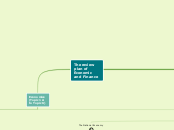The review plan of Economic and Finance
Economics (Topic 1 A to Topic 6)
Basic concepts of Economics (Topic 1 A)
Economic problems
The filed of economist study
Economic system
Command system
Free market system
Mix market system
Microeconomics (Topic 1 B -Topic 3)
Demand and Supply
Markets in Action (Elasticity)
Elasticity
Definition: the responsiveness of demand and suplly
Price elasticity of demand
Definition:The responsiveness of demand to change in price
Measurement: Percentage change in quantity demanded divided by percentage change in price
The sign :Negative
The value: Great or less than one (ignore the negative sign)
PeD is > 1: elastic; flatter demand curve
PeD is < 1: inelastic; steeper demand curve
PeD is =- 1: Unit elasticity of demand,unitary elastic
PeD is = 0 , perfectly in-elasticity,Vertical demand curve
PeD infinity: perfectly elasticity,horizontal demand curve
Determinants of price elasticity of demand
substitute goods
the proportion of income spent on the good
time
Price elasticity of demand and consumer expenditure
Total consumer expenditure (TE)=P*Q = Firm's total revenue
effects of a price change on expenditure: elastic demand
effects of a price change on expenditure: inelastic demand
Price elasticity of supply
Income elasticity of demand
measurement:Percentage change in quantity demanded divided by percentage change in income
determinants
degree of necessity
proportion of income spent on the good
applications
A positive result denotes a normal good
A negative result denotes an inferior good
Cross-price elasticity of demand(需求交叉价格弹性)
Indirect Tax
Market structure
Perfect competition market
Many firms
Unrestricted to entry
produce the undifferentiated products
Horizontal:The firm is a price taker
Monopolistic competition market
Oligopoly market
Monopoly market
Only one firm
Restricted or completely blocked to entry the market
Produce the Unique products
Downward sloping, more inelastic than oligopoly. Firm has considerable control over price
Macroeconomics(Topic 4 to Topic 6)
The National Economy
Unemployment
disequilibrium unemployment
real-wage (classical) unemployment
demand-deficient (cyclical) unemployment
unemployment arising from a growth in the labour supply
equilibrium unemployment
frictional (search) unemployment
results from workers who are between jobs
takes time for workers to find jobs (imperfect information)
structural unemployment
changing pattern of demand
technological unemployment (labour-saving technology)
regional unemployment
seasonal unemployment
Inflation
Defining inflation
Types of inflation
demand pull
cost push
interaction of demand-pull and cost-push inflation
Policies to tackle inflation
demand-side policies (affect AD)
supply-side policies (affect AS)
reduce monopoly power
increase productivity
expectations and inflation
structural (demand shift)
The quantity theory of money
The equation of exchange: MV = PY
M money supply
velocity of circulation
the average number of times annually that money is spent on goods and services
price index
real value of national income
the total expenditure (MV) equals the nominal GDP (PY)
Relationship between Unemployment and Inflation
The Phillips curve
Subtopic
Banking, Money and Interest Rates
The Meaning and Functions of Money
medium of exchange
means of evaluation
means of storing wealth
means of establishing value of future claims and payments
The Financial System
The Supply of Money
The Demand for Money
Equilibrium in the Money Market
Corporate and Finance (Topic 7-Topic 9)
分支主題
分支主題
分支主題
